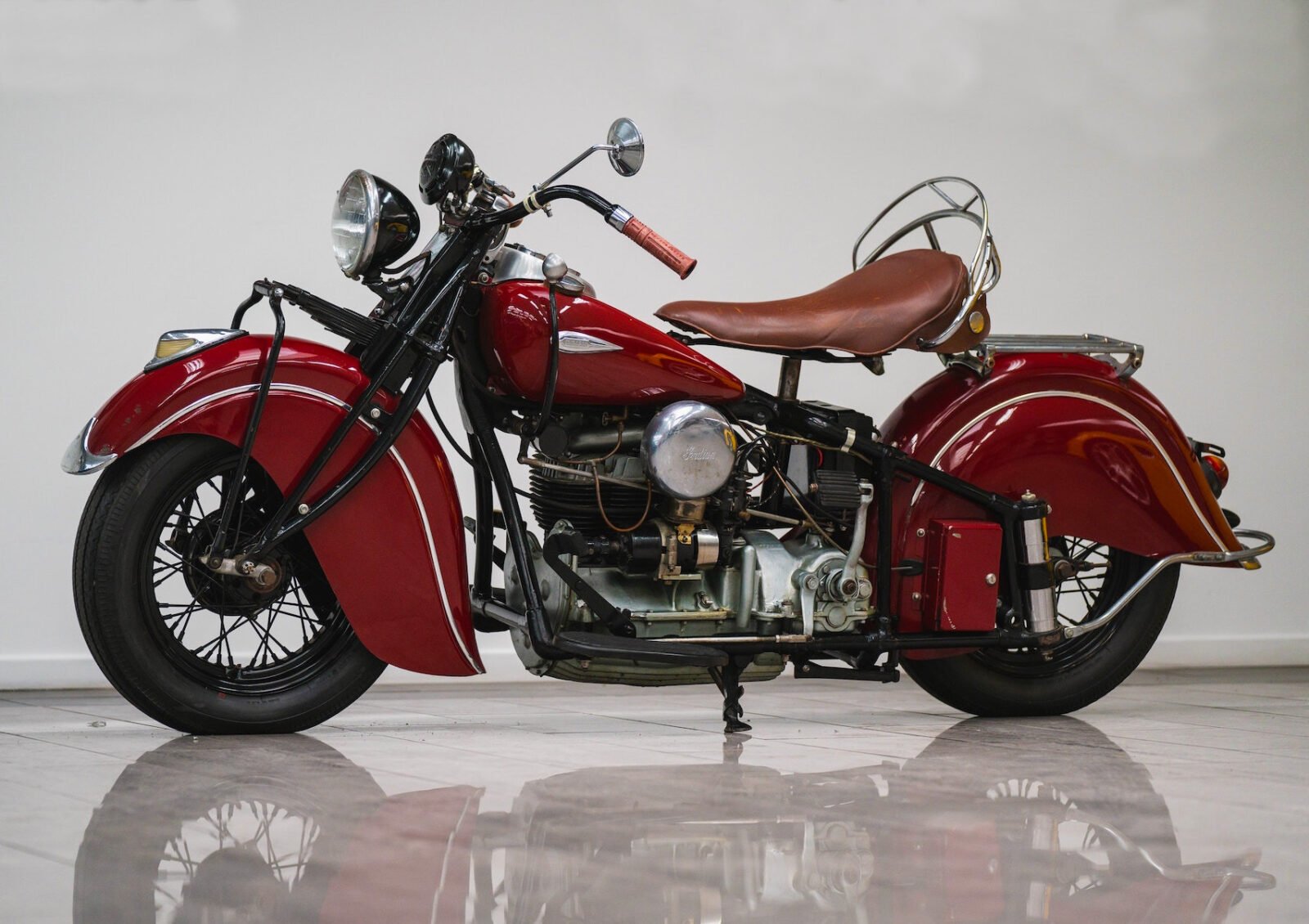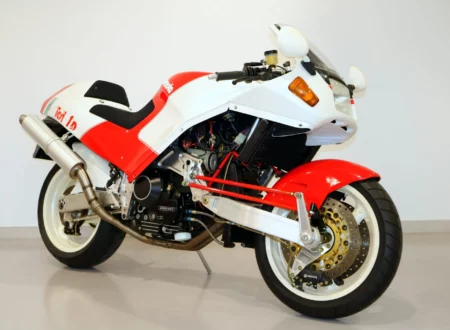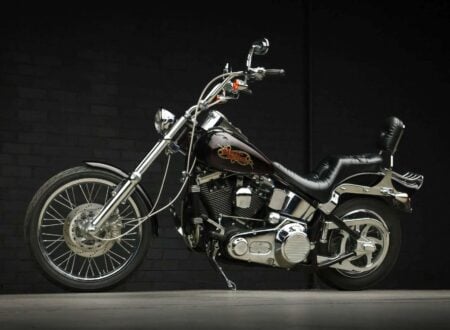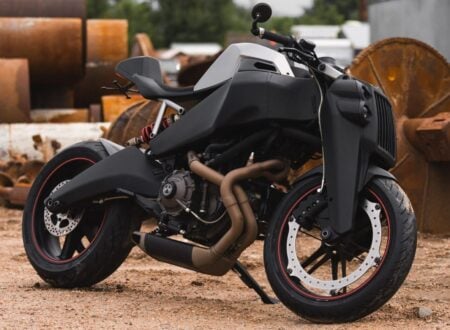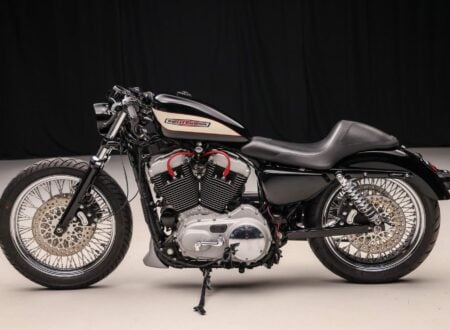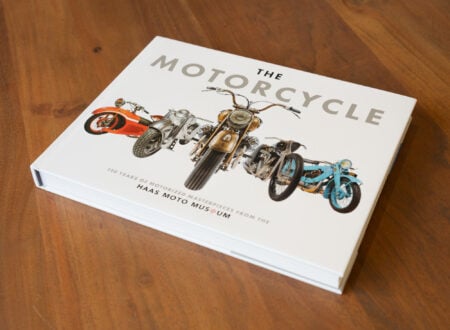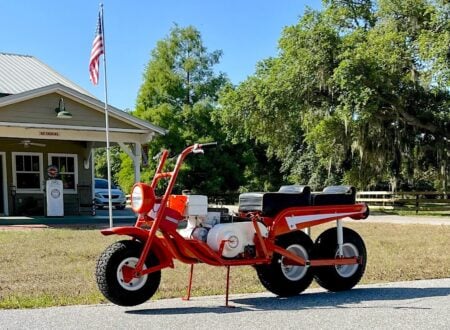Every surviving example of the Indian Four is special, however this one is a little more special than most as it previously belonged to Hollywood superstar and successful motorcycle racer Steve McQueen.
McQueen’s first motorcycle was another Indian, 1946 Indian Chief. In later years he remembered it during an interview: “It was my first bike and I loved it. But I was going with a girl who began to hate riding in the bumpy sidecar. She told me, “Either the cycle goes or I go!” Well, there was no contest. She went.”
Fast Facts – The 1940 Indian Four
- The Indian Four was first introduced by the Indian Motorcycle Manufacturing Company in 1928. Production continued until 1942, when it was halted due to World War II. The Indian Four was known for its distinctive inline-four engine and its sleek design, and it’s now a highly sought-after motorcycle among enthusiasts.
- The Indian Four’s design was heavily inspired by the Ace Four motorcycle, a high-performance four-cylinder motorcycle produced by Ace Motor Corporation. In 1927, Indian purchased Ace Motor Corporation and integrated Ace’s technology and design elements into the Indian Four.
- The first Indian Fours featured a 77 cubic-inch (1,260 cc) inline-four engine, which underwent several changes over the years to improve performance and reliability. In 1936, Indian introduced a new engine design, known as the “upside-down” engine, with the exhaust valves on the bottom and intake valves on the top. However, due to overheating issues, the company reverted to the original engine design by 1937.
- The Indian Four you see in this article is a 1940 model; it belonged to Steve McQueen and was being restored as part of his collection at the time of his death. It was sold by his estate in 1984, then restored, and it’s now being offered for sale out of Brussels in Belgium.
The Indian Four
The inception of the Indian Four can be traced back to the acquisition of Ace Motor Corporation by the Indian Motorcycle Manufacturing Company in 1927. The Ace Four, a high-performance four-cylinder motorcycle, provided the foundation for the Indian Four’s design, largely its inline-four engine which was among the most advanced in the world at the time.
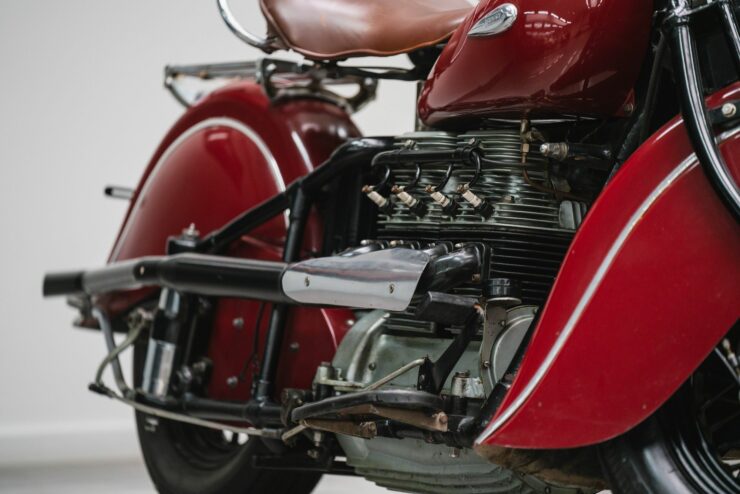

Initially, the Indian Four featured a 77 cubic inch (1,260cc) inline-four engine, which would undergo several modifications over the years to enhance performance and reliability. In 1936, Indian introduced a new engine design, dubbed the “upside-down” engine, with the exhaust valves positioned at the bottom and intake valves at the top in order to improve performance.
These changes did increase power however it also faced overheating issues, prompting the company to revert to the original engine design again in 1937.
In 1938, the Indian Four underwent significant stylistic and functional changes that would define its iconic appearance. Most notably, the addition of skirted fenders became a defining design element for Indian motorcycles. The suspension system also received an upgrade, with plunger-style rear suspension and a revised front fork, improving the handling of the model for riders.
The last iteration of the Indian Four, produced from 1941 to 1942, featured a 78 cubic inch (1,279cc) engine, along with other improvements such as enhanced cooling and a more robust crankshaft. However, with the outbreak of World War II, Indian shifted its focus to manufacturing military motorcycles, resulting in the end of Indian Four production in 1942.
Above Video: This is an original clip from The Ed Sullivan Show from October of 1968; it shows Steve McQueen riding his Rickman Triumph before taking Ed on a blast in a sand trail dune buggy that he helped design.
When WWII ended in 1945, Indian returned their V-twins to production, but they never brought back the inline-four. Other motorcycle manufacturers would experiment with inline-fours, perhaps most memorably MV Agusta, but it would be the Honda CB750 of 1969 that would make the engine layout (albeit in transverse form) a mainstay of superbikes for decades to come.
Steve McQueen’s 1940 Indian Four
As noted above the motorcycle you see here is a 1940 Indian Four that formerly belonged to Steve McQueen. Apparently under his ownership it had been torn down for a restoration, with the original engine removed from the frame – though they both stayed together.
“Everytime I start thinkin’ the world is all bad, then I start seeing some people out having a good time on motorcycles and it makes me take another look.” – Steve McQueen
The full list of cars, motorcycles, 4x4s, and planes owned by McQueen is extensive, and vehicles that formerly belonged to him all tend to be worth far more than usual at auction – oftentimes considerably more.
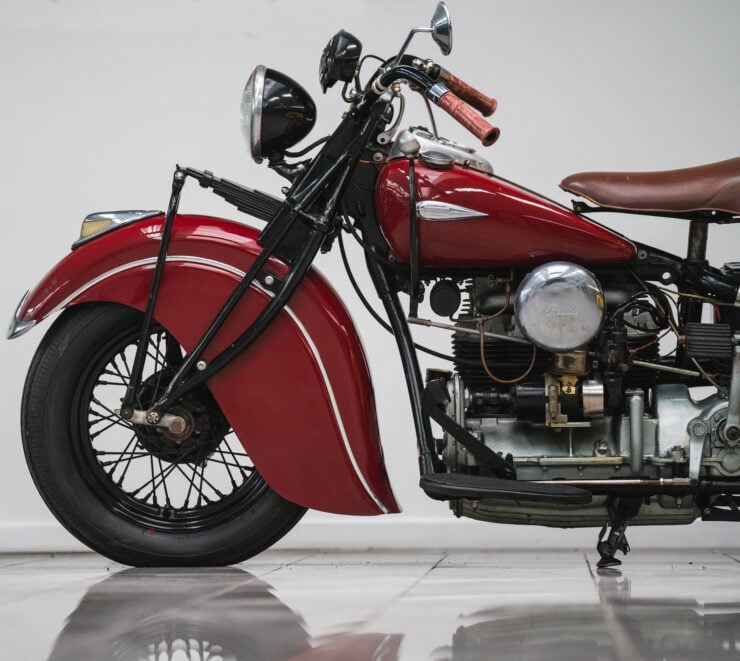

As his first ever motorcycle was an Indian the marque likely always had a certain amount of sentimental value for him, though of course he would go on to become far more famous for his exploits riding bikes like the Triumph TR6 and the Husqvarna 400 Cross.
This 1940 Indian Four was sold at the Steve McQueen Estate Auction at the Imperial Palace in November 1984 as lot 592. It came with ample documentation proving its ownership by McQueen, including a certificate of authenticity.
After it was sold the restoration was completed, the bike remained in the same family ownership for nearly 30 years until it was sold on in 2013. In the intervening years the bike has made its way to a new owner in Belgium, and they’re now offering it for sale.
The bike has 8,988 miles on the odometer and it’s being offered for sale on Collecting Cars. It is showing some light patina as the restoration occurred decades ago, however motorcycles like this often look better with some age on them.
If you’d like to read more about it or register to bid you can visit the listing here.
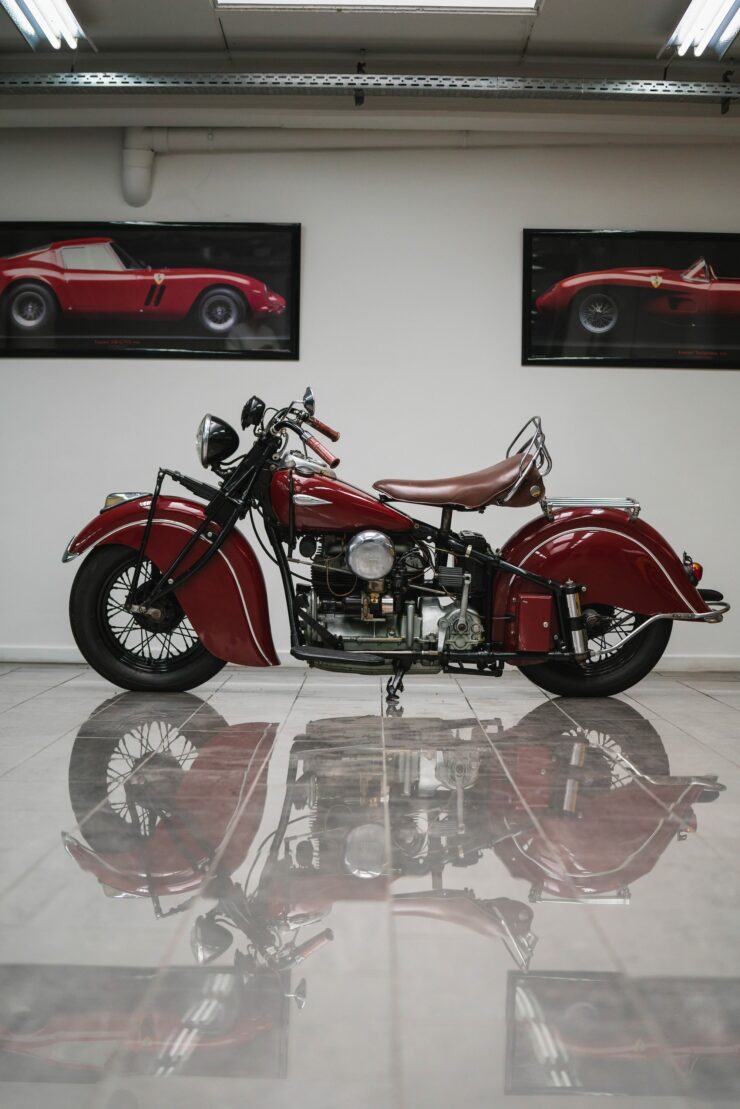
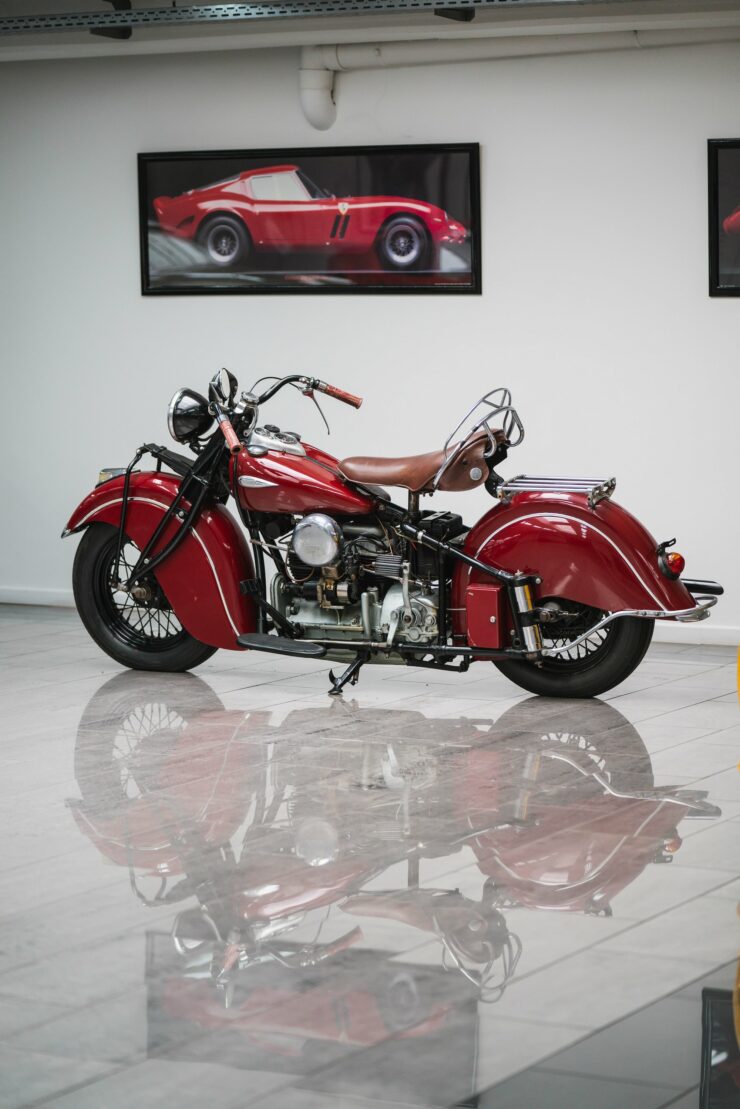
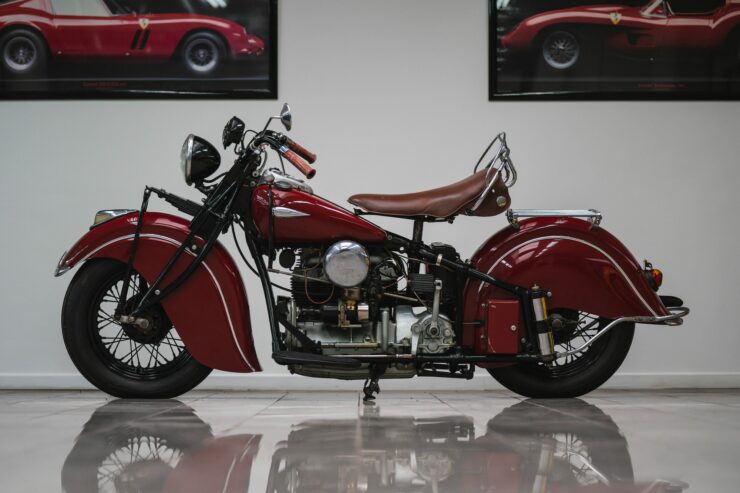
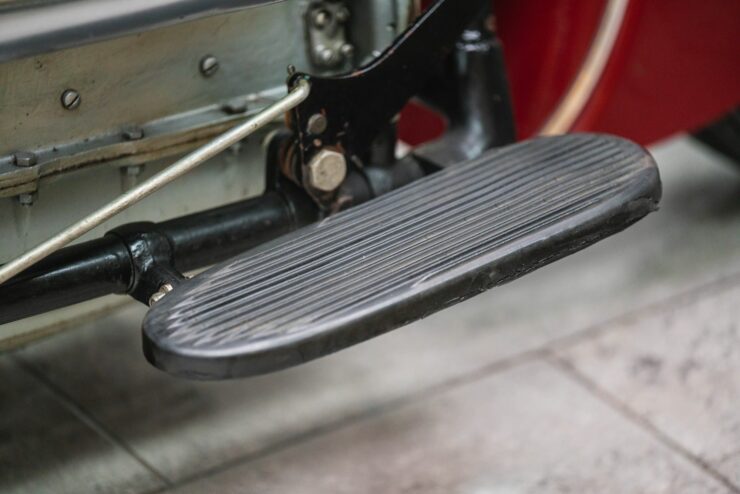
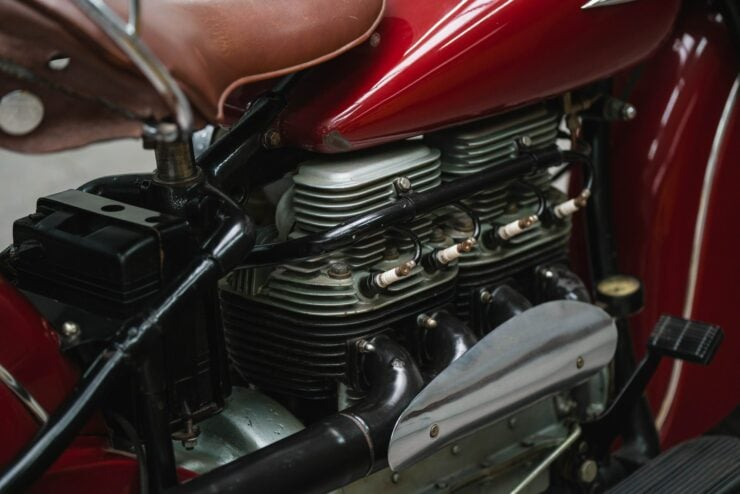
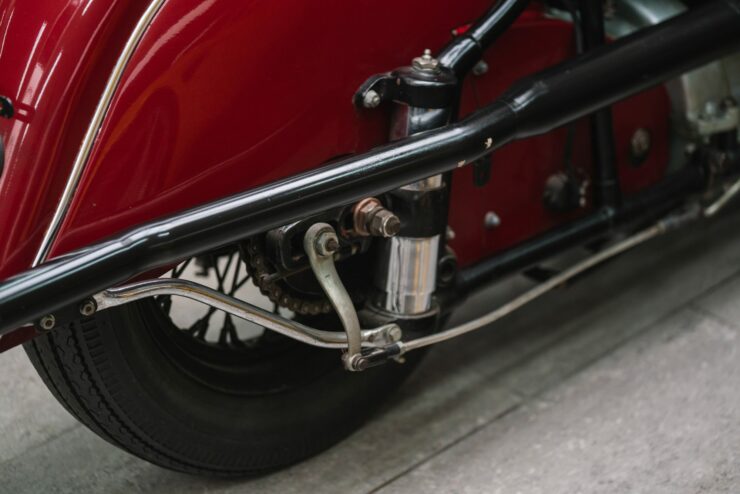
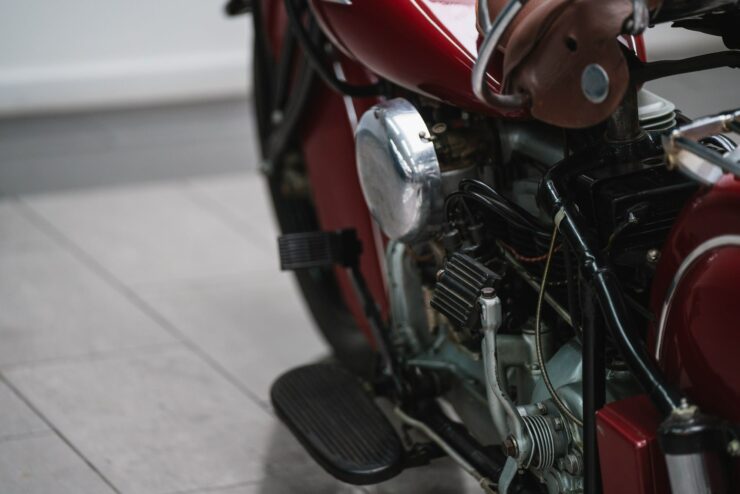
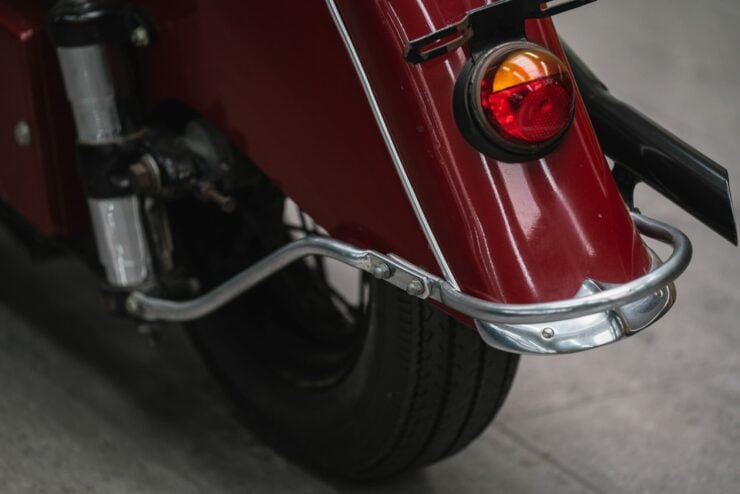
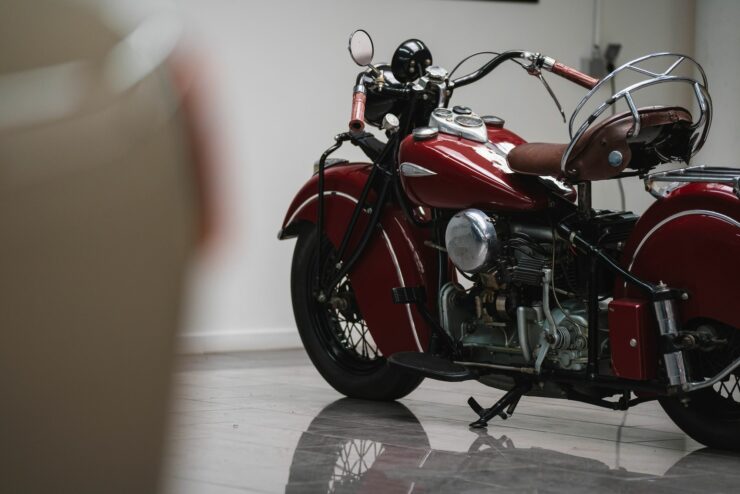
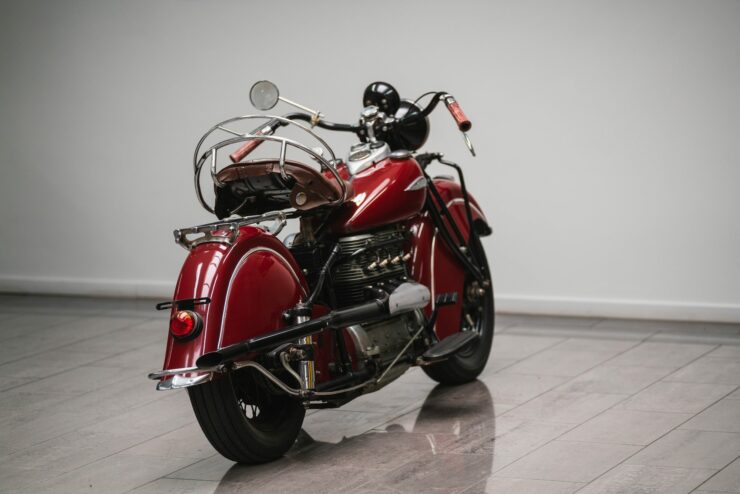
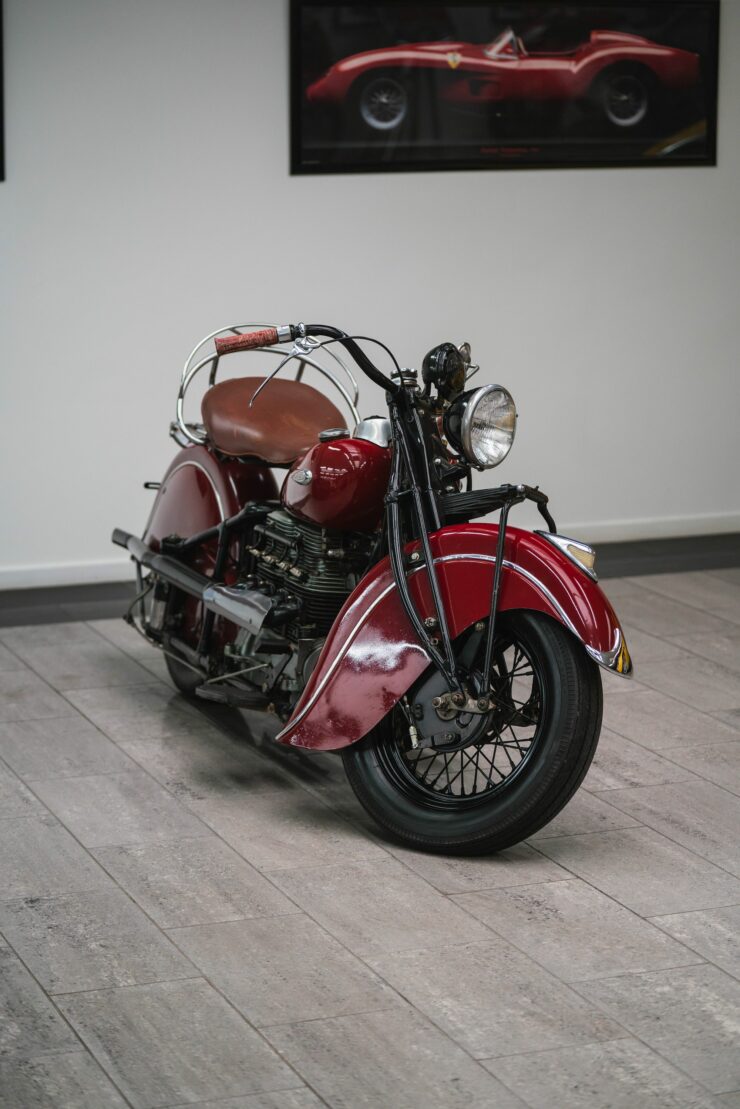
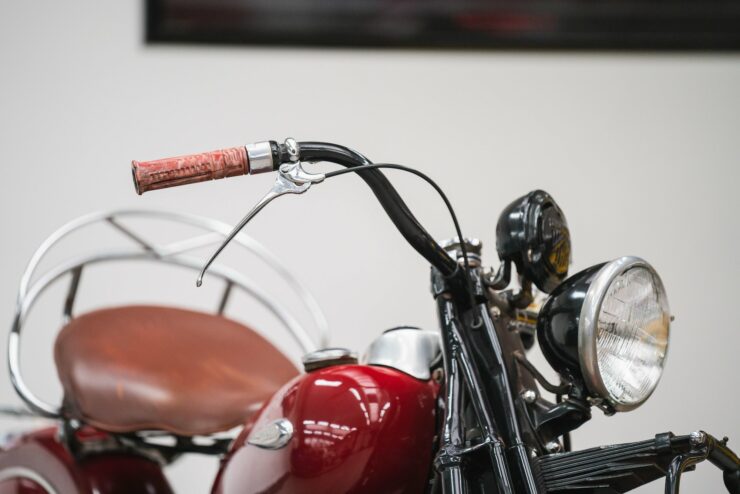
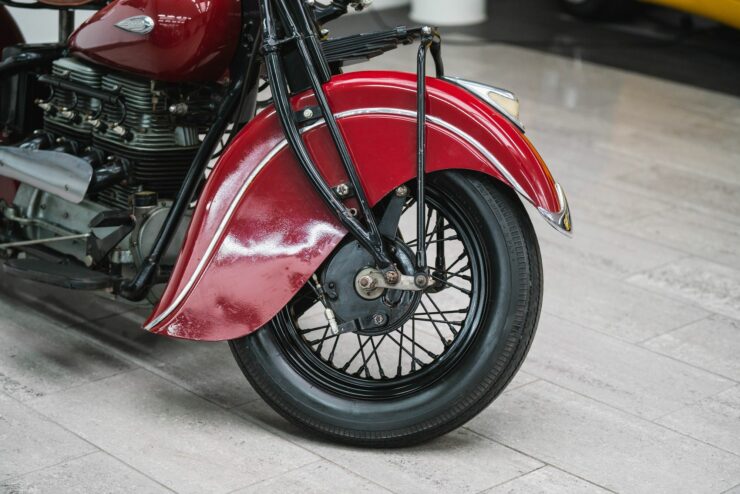
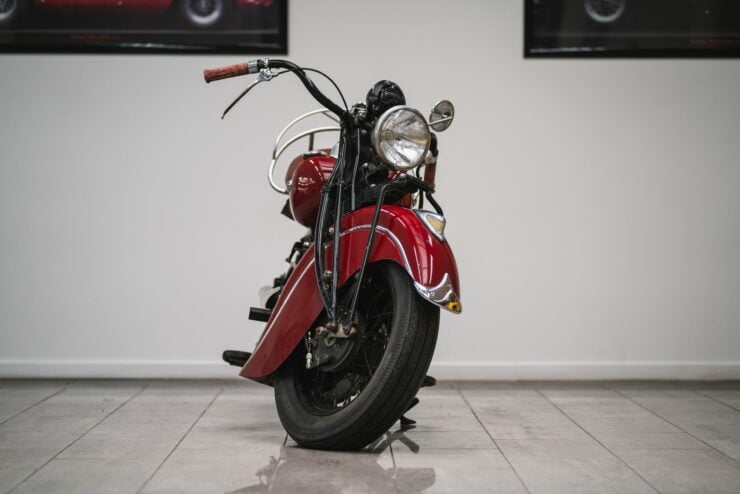
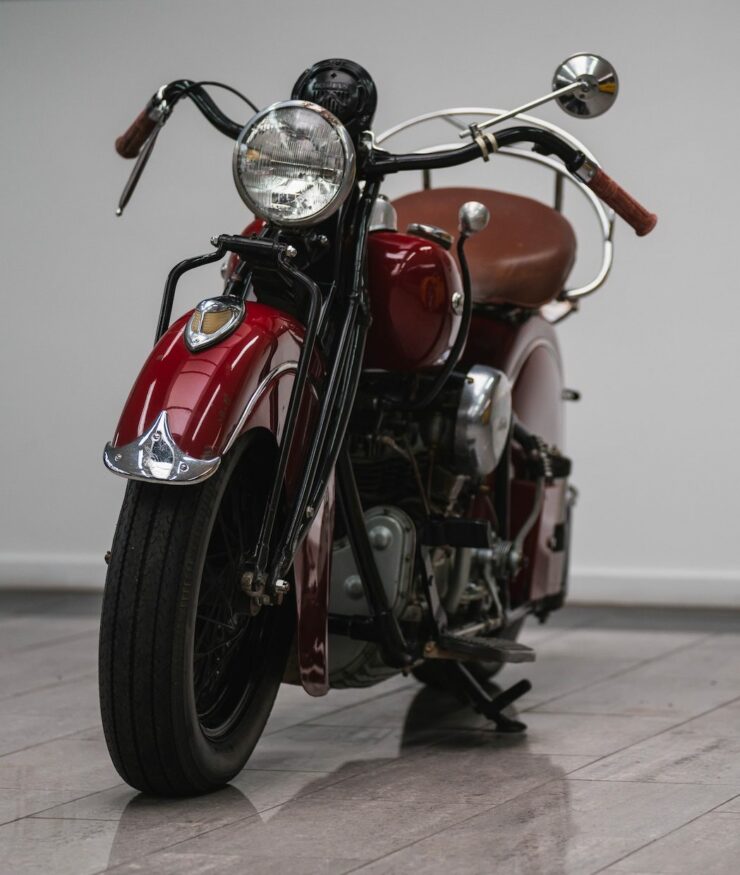
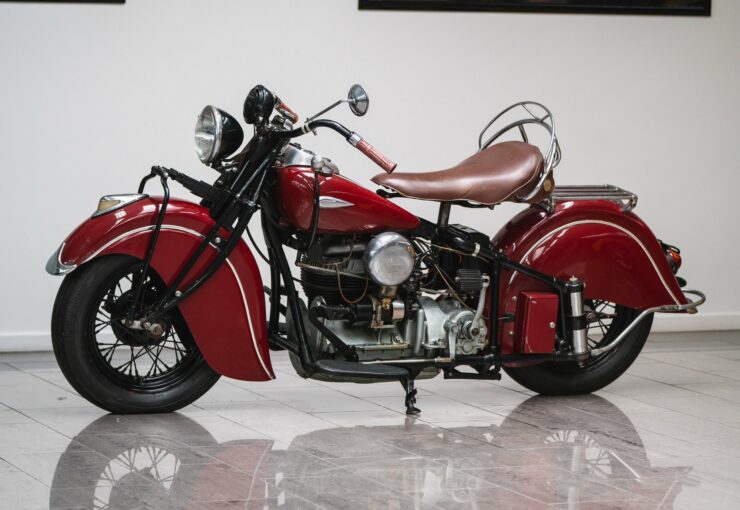
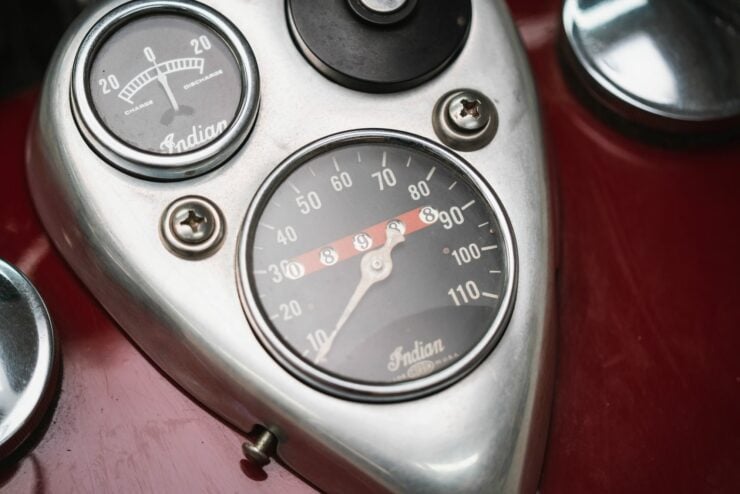
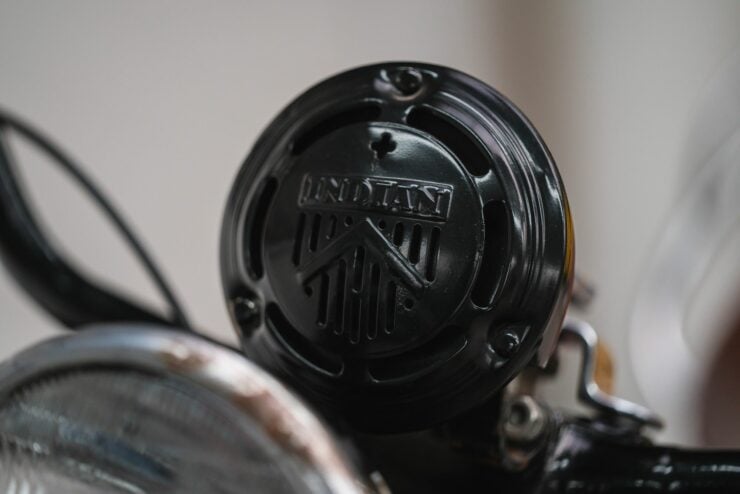
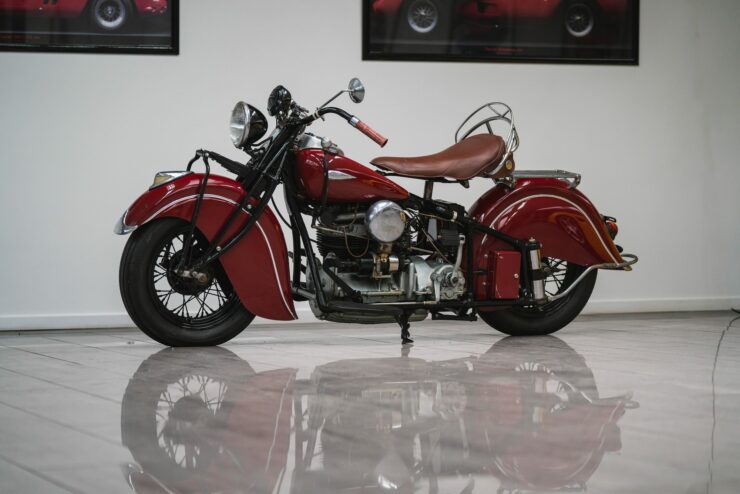
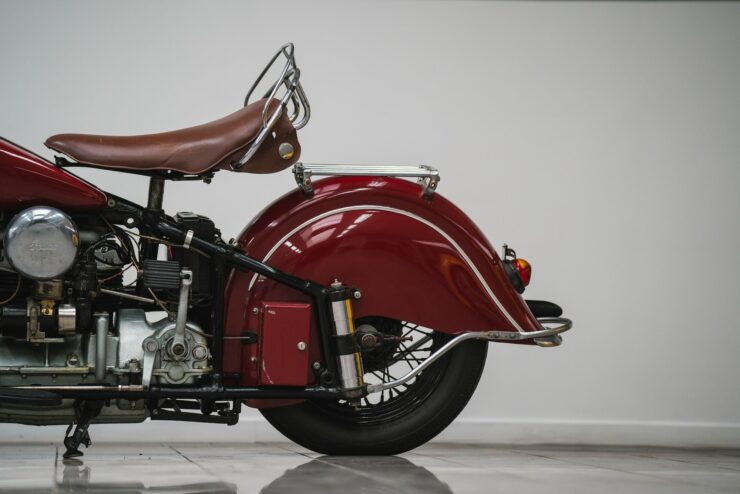
Images courtesy of Collecting Cars

Articles that Ben has written have been covered on CNN, Popular Mechanics, Smithsonian Magazine, Road & Track Magazine, the official Pinterest blog, the official eBay Motors blog, BuzzFeed, Autoweek Magazine, Wired Magazine, Autoblog, Gear Patrol, Jalopnik, The Verge, and many more.
Silodrome was founded by Ben back in 2010, in the years since the site has grown to become a world leader in the alternative and vintage motoring sector, with well over a million monthly readers from around the world and many hundreds of thousands of followers on social media.

